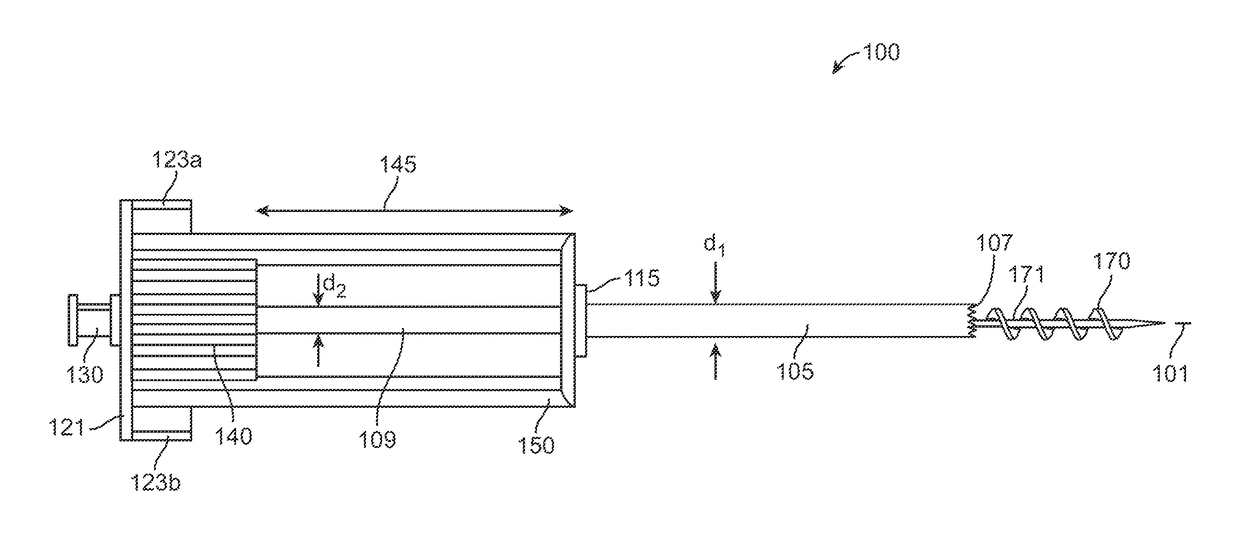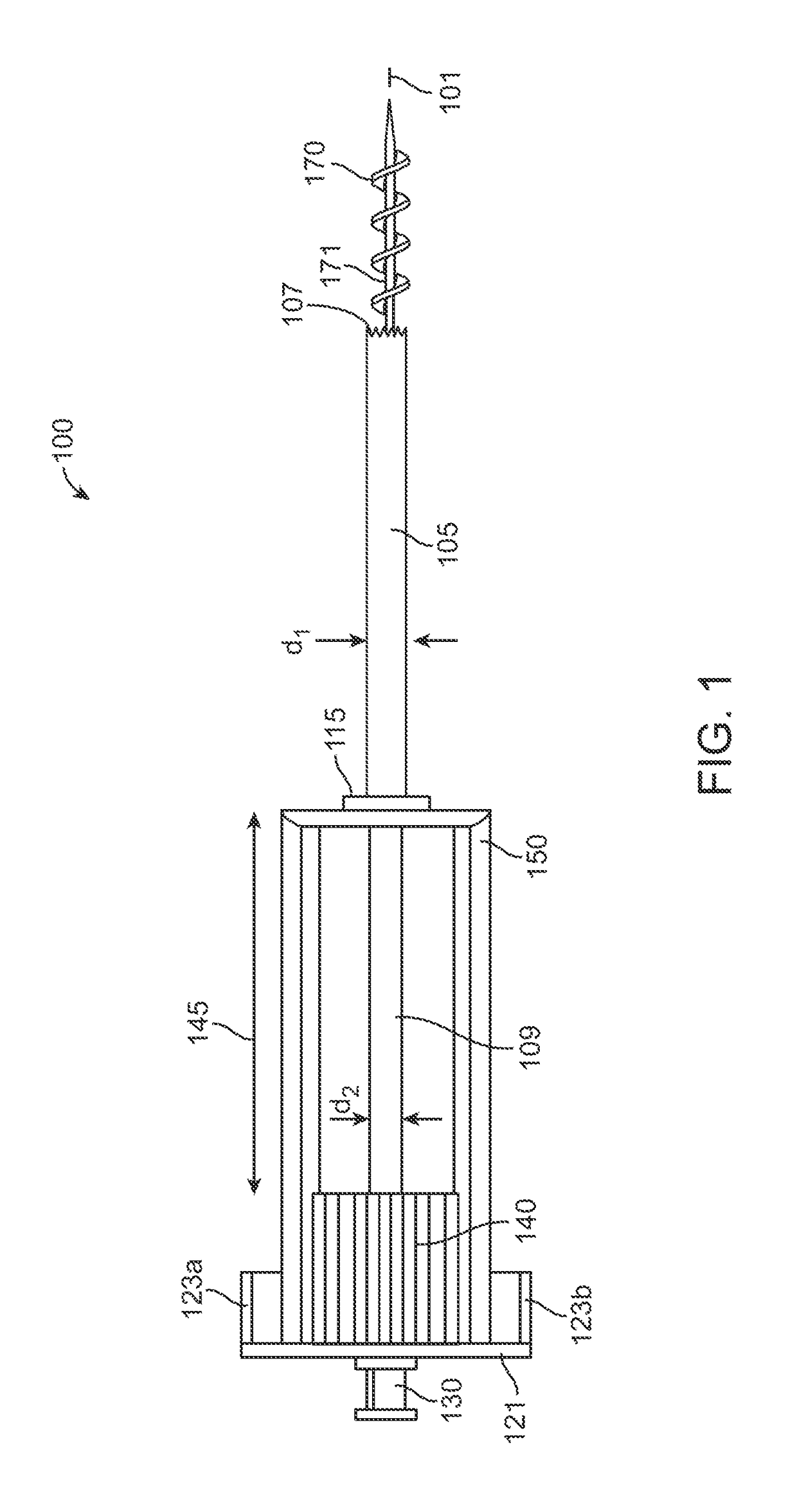Apparatus and methods for tissue reduction
a tissue and apparatus technology, applied in the field of apparatus and methods for tissue reduction, can solve the problems of affecting social and business activities, affecting a quality of life, and often swelling of tissue, and achieve the effect of precise positioning and control of the coring process
- Summary
- Abstract
- Description
- Claims
- Application Information
AI Technical Summary
Benefits of technology
Problems solved by technology
Method used
Image
Examples
embodiment 1400
[0117]Another embodiment is shown in the perspective views of FIGS. 14A to 14E which illustrates an embodiment 1400 similarly having an anchoring needle base 1306 with multiple anchoring needles 1308 and the coring needle 1302. This embodiment may further incorporate an additional spiraling needle body 1402 (e.g., Trim Helix) having a helically shaped blade 1404 (or any of the blade configurations described herein) to trim the cored turbinate tissue after coring. The spiraling needle body 1402 may also be advanced into the tissue to pre-trim and capture the tissue (as described herein) prior to introduction of the coring needle. As shown in FIG. 14A, the spiraling needle body 1402 may be advanced through the coring needle 1302 and between the anchoring needles 1308 before or after the coring needle 1302 has been advanced, as shown in FIG. 14C. FIG. 14D shows a detail perspective view of the blade 1404 extended distally beyond the piercing tips 1308 and cutting edge 1304 of coring ne...
embodiment 1500
[0118]FIGS. 15A to 15F illustrate yet another embodiment 1500 in which a needle base 1502 may incorporate one or more blades 1506 which are configured as individual cutting elements having piercing tips 1504, as shown in FIG. 15C and detail view of FIG. 15B. A sheath 1508 may also be incorporated to slidingly translate over the needle base 1502 and one or more blades 1506, as illustrated in FIG. 15A. Additionally, a coring needle 1302 may also be introduced through the needle base 1502 for coring the tissue, as shown in FIG. 15D and detail view of FIG. 15E. In use, the anchoring blades 1506 may be initially covered by and circumferentially supported through sheath 1508 during initial introduction into proximity of the tissue to be resected. The anchoring blades 1506 may be advanced into the turbinate tissue while cutting the tissue via the blades and the coring needle 1302 may then be introduced through the needle base 1502 and blades 1506 to core the tissue. FIG. 15F illustrates a ...
embodiment 1800
[0123]In yet another embodiment, instead of using piercing needles to anchor the tissue region, clamping mechanisms may be used to engage and hold an exterior surface of the tissue region. FIGS. 18A to 18F illustrate an embodiment 1800 which incorporates a sliding clamp mechanism 1802 and a distal clamp mechanism 1806 that may be used to engage and hold the tissue of the anterior surface of the turbinate, e.g., prior to introduction of the coring needle. The distal clamp 1806 may be formed as a shoulder or surface which extends radially from a distal end of a translatable tubular member 1804 while the sliding clamp mechanism 1802 may be formed as a tubular member which defines projections, notched features, or any other mechanism configured to engage tissue, as shown in FIGS. 18A and 18B. The sliding clamp mechanism 1802 may be translatably positioned exterior to the translatable tubular member 1804 so that when the clamp mechanism 1802 and distal clamp 1806 are translated towards o...
PUM
 Login to View More
Login to View More Abstract
Description
Claims
Application Information
 Login to View More
Login to View More - R&D
- Intellectual Property
- Life Sciences
- Materials
- Tech Scout
- Unparalleled Data Quality
- Higher Quality Content
- 60% Fewer Hallucinations
Browse by: Latest US Patents, China's latest patents, Technical Efficacy Thesaurus, Application Domain, Technology Topic, Popular Technical Reports.
© 2025 PatSnap. All rights reserved.Legal|Privacy policy|Modern Slavery Act Transparency Statement|Sitemap|About US| Contact US: help@patsnap.com



